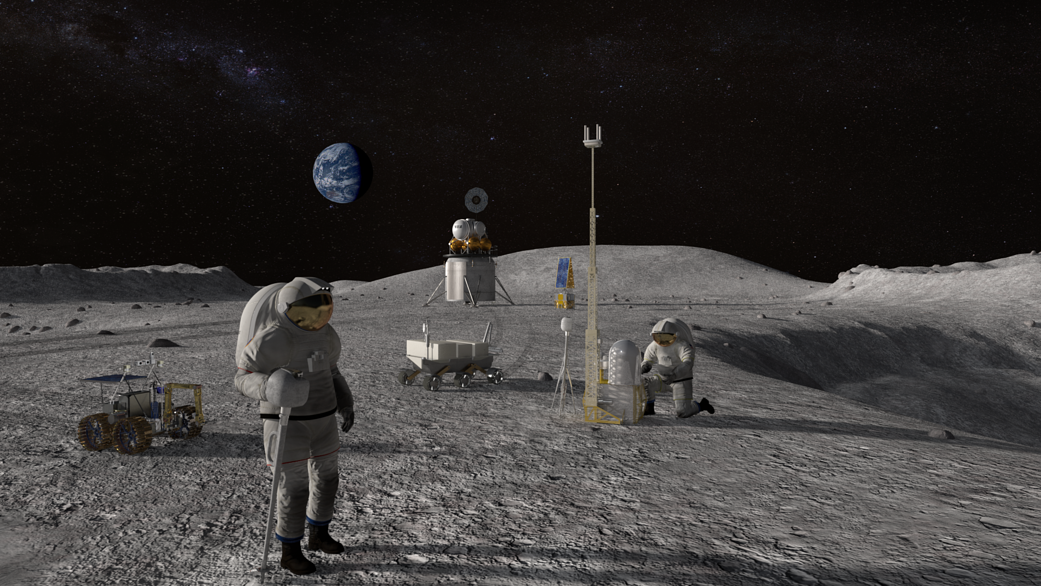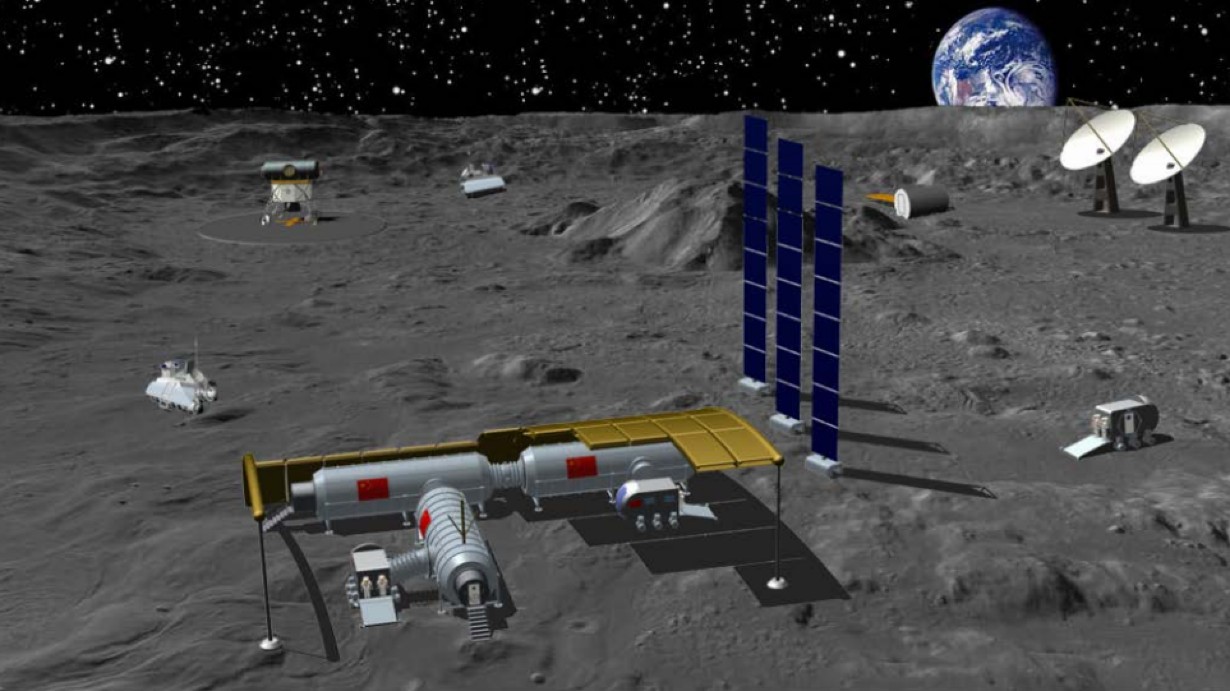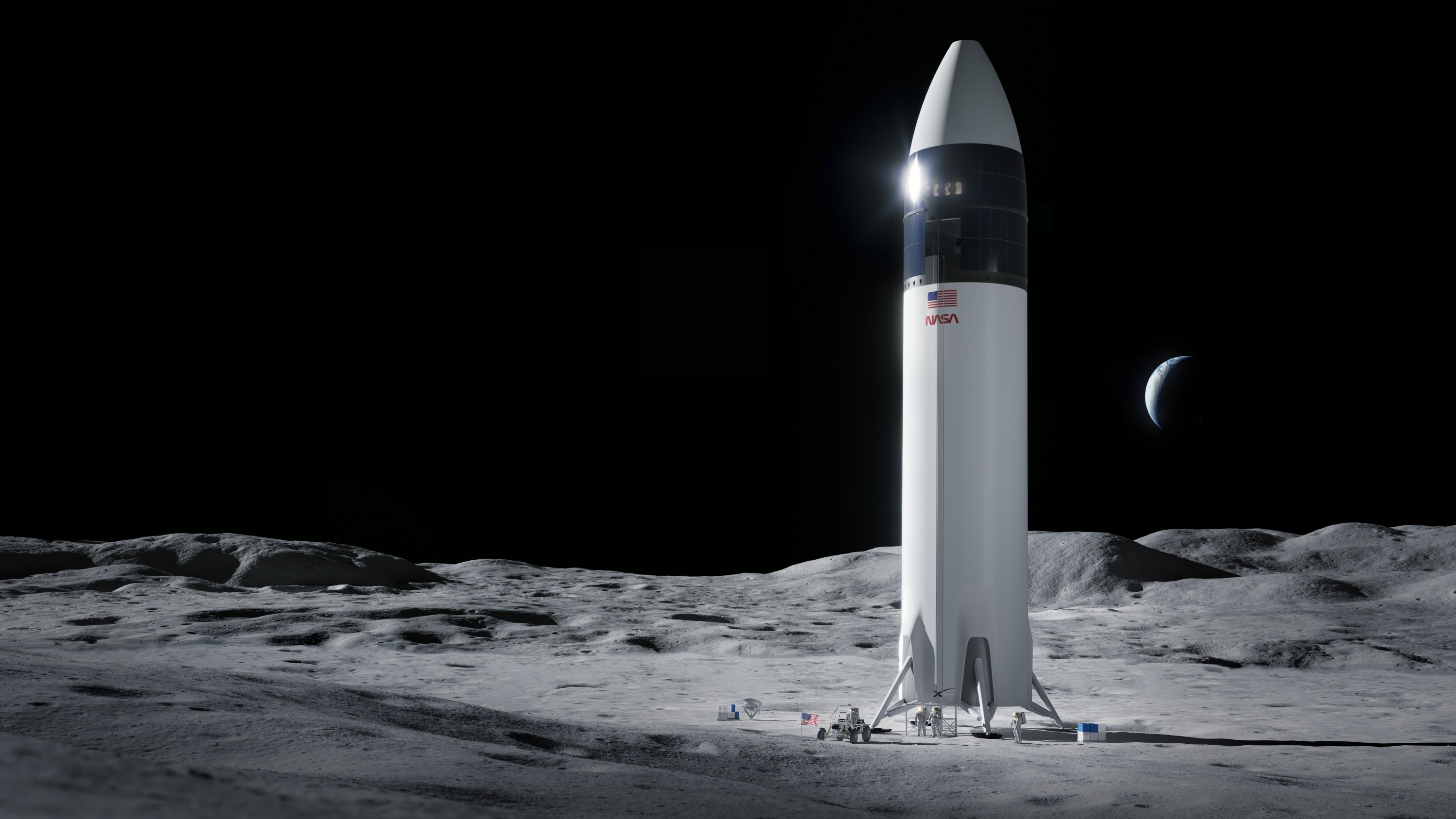The fierce rivalry between the US and China in the modern lunar race, focused on placing humans on the Moon, intensifies as both countries seek to rally more partners for their ambitious missions.
Both China and the United States have set their sights on establishing settlements at the Moon’s South Pole, where water in the form of ice exists in permanently shadowed craters.
Through its Artemis program, the US is forming a lunar coalition with the Artemis Accords, outlining guidelines for lunar exploration.
The Artemis program, led by NASA, aims to construct one or more bases near the Moon’s South Pole by the end of the 2020s. These endeavors are crucial for NASA’s broader goal of sending astronauts to Mars by the late 2030s or early 2040s.
Meanwhile, China is collaborating with Russia on the International Lunar Research Station (ILRS), a project with somewhat similar objectives to Artemis, intending to establish a base near the Moon’s South Pole.
Beijing is also forming partnerships with friendly nations for its lunar exploration initiatives.
In April, China announced the establishment of the International Lunar Research Station Cooperation Organization (ILRSCO). This organization has been set up to oversee and coordinate the various aspects of the International Lunar Research Station (ILRS) project.
Yet, despite the common goal, collaboration between the space agencies of these two major powers is hindered by the Wolf Amendment, a US law passed in 2011 that prohibits NASA from directly working with Chinese organizations due to concerns about technology theft.
During a budget hearing in April, NASA Chief Bill Nelson expressed the need for the amendment to remain in force, citing worries about a potential “space race” with China.
Nelson highlighted the possibility that if China were to reach the Moon first, they might claim territorial rights, highlighting the strategic importance of lunar exploration. “This is where we’re going, and China’s going [too] … My concern is if China were to get there first, they’d say, ‘this is our territory; you stay out,'” Nelson said.
USA’s Artemis Program
The USA’s Artemis Program, succeeding the Apollo missions that sent seven manned crews to the Moon between 1969 and 1972, aims to achieve lunar landings, establish a long-term base, and send the first astronauts to Mars.
As of November 2023, NASA stated that 32 nations, including the US, have signed the Artemis Accords. Among these signatories are countries such as Australia, Brazil, Canada, France, Germany, India, Japan, South Korea, and the United Kingdom.
The Artemis Accords prioritize affirming crucial international treaties governing outer space activities.
Among these is the endorsement of the 1967 Outer Space Treaty, officially known as the Treaty on Principles Governing the Activities of States in the Exploration and Use of Outer Space, Including the Moon and Other Celestial Bodies. NASA’s Artemis program comprises three critical missions: Artemis-I, II, and III.
For Artemis I, NASA employed its most potent super heavy-lift launch vehicle, the Space Launch System (SLS), to transport the Orion spacecraft, astronauts, and cargo directly to the Moon in a single mission.

The Orion spacecraft, designed for deep-space exploration to the Moon and Mars, can carry a human crew, provide emergency abort, sustain astronauts during missions, and ensure safe re-entry from deep space.
Launched on November 16, 2022, the SLS carrying Orion underwent an uncrewed integrated flight test, separating from the main engine and the interim cryogenic propulsion stage (ICPS) after a systems check.
Following a lunar flyby and a half revolution around the Moon, Orion returned to Earth’s orbit, splashing down in the Pacific Ocean on December 11, 2022
Artemis-II, set for 2024, will carry a crew on a ten-day mission and conduct various maneuvers and tests in Earth’s orbit before a lunar flyby.
The crew, including the historic first non-white moonwalker, Victor Glover, and the first woman on the Moon, Christina Koch, is currently undergoing training.
Following the initial two Artemis missions aimed at understanding and showcasing the Orion spacecraft’s capabilities, the focus shifts to the third mission, Artemis-III, which centers on landing astronauts on the Moon.
In this historic undertaking, Elon Musk’s SpaceX is responsible for building a lander to transport astronauts to the lunar surface safely. However, the craft is still developing and has a long way to go before it is ready.
China’s ILRS Project
Chinese space officials have outlined three critical phases for the ILRS initiative: survey, construction, and utilization. The initial phase is in progress, analyzing data collected by China’s Chang’e 4 robotic mission, which landed on the far side of the Moon in January 2019.
The reconnaissance phase will persist through the coming years, incorporating upcoming robotic missions like Chang’e 6 and Chang’e 7.
In addition to data from Chinese space missions, information gathered by Russia’s Luna 25, Luna 26, and Luna 27 probes will also be considered in the context of the ILRS initiative.
The subsequent roughly decade-long construction stage will commence in 2026, with additional robotic missions planned by China, Russia, and potentially international collaborators.
The ILRS coalition currently only comprises seven nations: China, Russia, Belarus, Pakistan, Azerbaijan, Venezuela, and South Africa.

While the latter five countries may not be considered major players in space, China’s interest in the coalition goes beyond technical contributions, indicating a broader set of criteria at play.
Nonetheless, if the plan unfolds successfully, the ILRS is anticipated to be prepared for crewed missions around 2036. However, it is essential to underscore that this timeline remains a proposal rather than a firm commitment.
Besides that, the UAE, a participating nation in the US-led Artemis mission, previously signed a Memorandum of Understanding (MoU) to contribute to the Chang’e-7 mission with a small rover.
However, subsequent reports indicate that specific components vital for the spacecraft could not be utilized due to US export control rules. As a result, the UAE chose to withdraw from the project.
However, on November 20, reports surfaced that China has included a university from the United Arab Emirates in its roster of partners for the nation’s moon base aspirations.
The Deep Space Exploration Laboratory (DSEL) and the University of Sharjah (UoS) in the United Arab Emirates (UAE) signed a Memorandum of Understanding (MoU) on November 14, outlining their collaboration on the International Lunar Research Station (ILRS), as announced by DSEL.
This agreement between the two entities primarily focuses on fostering collaboration and establishing an international platform for implementing, operating, and utilizing the ILRS, as reported by Sharjah 24.
Who Takes The Lead In The Moon Race?
While the US undeniably maintains a significant lead over China and Russia in the overall space program, the advancements made by Beijing in recent years have raised concerns in the US about it potentially surpassing NASA, particularly in the lunar race in the upcoming decades.
China has already initiated a shift in the technological landscape, challenging the long-standing American lead in space exploration. For instance, in a key achievement in 2019, China achieved a historic milestone by landing a spacecraft on the Moon’s far side.
Following this triumph in 2021, China further solidified its prowess by successfully deploying a rover on Mars. That success made it the second nation, alongside the United States, to accomplish this feat on the Red Planet.
Moreover, China has established its space station in Earth orbit, a noteworthy achievement, especially as the International Space Station ages.
Recently, as reported by the EurAsian Times, US intelligence publicly voiced concerns about the possibility of China outpacing the United States in the competition to send humans back to the Moon and establish a lunar outpost.

US-based analysts believe that while no country can claim sovereignty over the Moon, there is a notable consideration that China might establish a keep-out zone, preventing other nations from landing within a specified perimeter, akin to its actions in the South China Sea, where it constructed islands and asserted exclusion zones.
In 2019, then US Vice President Mike Pence pushed NASA to achieve an ambitious moon landing by 2024 to surpass China, which he alleged aimed to control the strategic lunar territory and lead space exploration.
However, the competition between the US and China to gain an edge in the lunar race presents challenges for both countries.
Since the introduction of ILRS plans, China has observed certain developments, such as Russia’s ongoing invasion of Ukraine, which could be a source of unease for Beijing.
The financial strain resulting from the conflict could potentially lead to the redirection of resources away from Russia’s civil space program, thereby influencing the anticipated trajectory of the ILRS initiative.
On the other hand, there is also inherent uncertainty associated with Artemis. SpaceX’s next-gen Starship vehicle, slated to be the program’s crewed lunar lander, must become fully operational in the coming years.
On November 18, SpaceX’s Starship spacecraft successfully entered space from Boca Chica, Texas. But it experienced an explosion over the Gulf of Mexico about eight minutes after liftoff due to an unexpected activation of its self-destruct function.
Both nations will need to tackle various challenges within their space programs. Yet, the substantial international backing might advance the US-led initiative ahead of Beijing regarding technology and timely progress.
- Contact the author at ashishmichel(at)gmail.com
- Follow EurAsian Times on Google News




